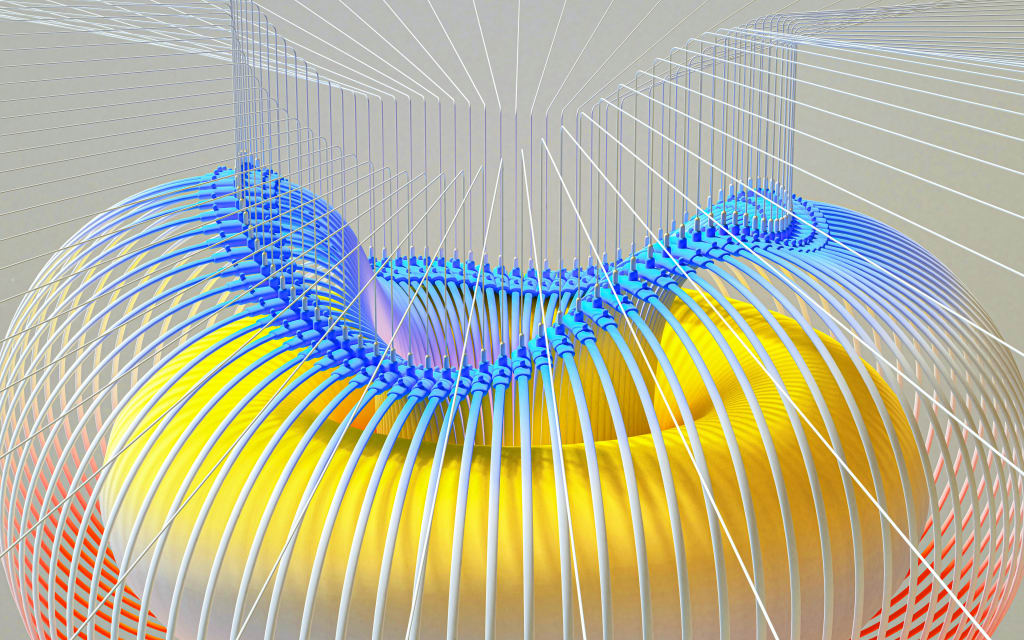The Future of Renewable Energy
Innovations, Challenges, and Opportunities

# The Future of Renewable Energy: Innovations, Challenges, and Opportunities
## Introduction
As the global demand for energy continues to rise, the transition to renewable energy sources has become imperative to combat climate change, reduce dependence on fossil fuels, and promote sustainable development. This comprehensive exploration delves into the future of renewable energy, highlighting innovative technologies, key challenges, and the immense opportunities that lie ahead.
## The Rise of Renewable Energy
### Why Renewable Energy?
Renewable energy sources, such as solar, wind, hydro, geothermal, and biomass, are derived from natural processes that are constantly replenished. The shift towards these sources is driven by several factors:
1. **Environmental Benefits**: Renewable energy reduces greenhouse gas emissions and pollution, mitigating the impact of climate change.
2. **Energy Security**: Diversifying energy sources enhances national security by reducing reliance on imported fuels.
3. **Economic Growth**: The renewable energy sector generates jobs, stimulates technological innovation, and attracts investments.
4. **Sustainability**: Unlike finite fossil fuels, renewable energy sources are abundant and sustainable.
### Current State of Renewable Energy
Renewable energy has seen significant growth over the past decade. According to the International Energy Agency (IEA), renewables accounted for nearly 30% of global electricity generation in 2020. This growth is expected to continue, driven by declining costs, supportive policies, and technological advancements.
## Innovations in Renewable Energy Technologies
### Solar Energy
1. **Photovoltaic (PV) Cells**: Advances in PV technology, such as perovskite solar cells, have increased efficiency and reduced costs, making solar energy more competitive.
2. **Concentrated Solar Power (CSP)**: CSP systems, which use mirrors or lenses to concentrate sunlight, are improving in efficiency and storage capabilities, allowing for energy generation even when the sun is not shining.
3. **Building-Integrated Photovoltaics (BIPV)**: Integrating solar cells into building materials, such as windows and facades, provides an aesthetically pleasing way to generate energy.
### Wind Energy
1. **Offshore Wind Farms**: Offshore wind farms are being developed to harness stronger and more consistent winds at sea. Innovations in floating wind turbines are expanding the potential of offshore wind energy.
2. **Advanced Turbine Designs**: Improved turbine designs, including larger blades and enhanced materials, increase energy capture and reduce costs.
3. **Digitalization and AI**: Using AI and data analytics to optimize turbine performance, predict maintenance needs, and enhance grid integration.
### Hydropower
1. **Pumped Storage Hydropower**: Pumped storage provides a method for storing excess energy by pumping water uphill to a reservoir, then releasing it to generate electricity when needed.
2. **Small and Micro Hydropower**: These systems are designed for smaller water flows, providing renewable energy to remote and off-grid communities.
3. **Marine and Hydrokinetic Energy**: Technologies such as tidal and wave energy converters are harnessing the power of oceans and rivers.
### Geothermal Energy
1. **Enhanced Geothermal Systems (EGS)**: EGS technology allows for the extraction of geothermal energy from hot, dry rock formations, significantly expanding the potential for geothermal energy production.
2. **Geothermal Heat Pumps**: These systems use the stable temperatures underground to heat and cool buildings efficiently.
### Biomass Energy
1. **Advanced Biofuels**: Research into biofuels derived from non-food sources, such as algae and waste materials, aims to produce sustainable fuels for transportation.
2. **Biogas**: Anaerobic digestion of organic waste produces biogas, which can be used for electricity, heating, and as a vehicle fuel.
## Challenges Facing Renewable Energy
### Intermittency and Reliability
1. **Energy Storage**: The intermittent nature of solar and wind energy requires effective storage solutions to ensure a reliable energy supply. Advances in battery technology, such as lithium-ion and solid-state batteries, are critical.
2. **Grid Integration**: Integrating renewable energy into existing power grids poses technical challenges. Smart grids and advanced grid management systems are essential for balancing supply and demand.
### Infrastructure and Investment
1. **High Initial Costs**: Despite declining costs, the initial investment for renewable energy infrastructure can be high. Public and private sector financing, along with supportive policies, are needed to overcome this barrier.
2. **Transmission Networks**: Upgrading and expanding transmission networks is necessary to transport renewable energy from production sites to consumption areas.
### Policy and Regulatory Barriers
1. **Inconsistent Policies**: Fluctuating policies and regulations can create uncertainty for investors and developers. Stable, long-term policies are crucial for sustained growth.
2. **Permitting and Licensing**: Streamlining the permitting and licensing process for renewable energy projects can accelerate development.
### Environmental and Social Concerns
1. **Land and Resource Use**: Large-scale renewable energy projects can impact land use, wildlife habitats, and water resources. Careful planning and community engagement are needed to mitigate these impacts.
2. **Social Acceptance**: Public acceptance of renewable energy projects is essential. Community involvement and transparent communication can address concerns and build support.
## Opportunities and Future Trends
### Energy Transition and Decarbonization
1. **Global Commitments**: International agreements, such as the Paris Agreement, are driving efforts to reduce carbon emissions and transition to renewable energy.
2. **Corporate Sustainability**: Increasingly, corporations are committing to renewable energy and sustainability goals, driving demand and investment in the sector.
### Technological Advancements
1. **Energy Storage Innovations**: Breakthroughs in energy storage technologies, including advanced batteries and hydrogen storage, are expected to enhance the reliability and flexibility of renewable energy systems.
2. **Digitalization**: The integration of digital technologies, such as the Internet of Things (IoT) and artificial intelligence (AI), is optimizing energy production, distribution, and consumption.
### Distributed Energy Systems
1. **Microgrids**: Microgrids, which can operate independently from the main grid, are providing reliable energy to remote and underserved areas.
2. **Prosumer Models**: The rise of prosumers—consumers who also produce energy—through rooftop solar panels and home energy storage systems is decentralizing energy production.
### Green Hydrogen
1. **Hydrogen Production**: Producing hydrogen using renewable energy (green hydrogen) offers a versatile and sustainable energy carrier for various sectors, including industry, transportation, and heating.
2. **Infrastructure Development**: Developing infrastructure for hydrogen production, storage, and distribution is critical for realizing its potential.
### Electrification of Transport
1. **Electric Vehicles (EVs)**: The growth of EVs is reducing dependence on fossil fuels and promoting the use of renewable energy for transportation.
2. **Charging Infrastructure**: Expanding charging infrastructure and integrating it with renewable energy sources is essential for supporting the EV revolution.
## Conclusion
The future of renewable energy is bright, characterized by rapid technological advancements, increasing investments, and strong policy support. While challenges remain, the opportunities for innovation, sustainability, and economic growth are immense. By continuing to invest in research, development, and deployment of renewable energy technologies, we can pave the way for a cleaner, more sustainable future. The transition to renewable energy is not just an environmental imperative but also an opportunity to create a resilient and equitable energy system for generations to come.
About the Creator
Enjoyed the story? Support the Creator.
Subscribe for free to receive all their stories in your feed. You could also pledge your support or give them a one-off tip, letting them know you appreciate their work.





Comments
There are no comments for this story
Be the first to respond and start the conversation.